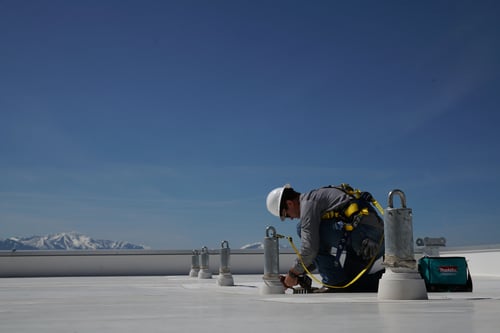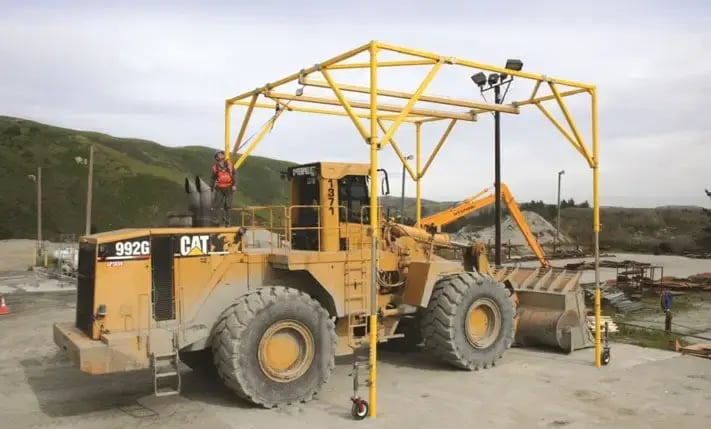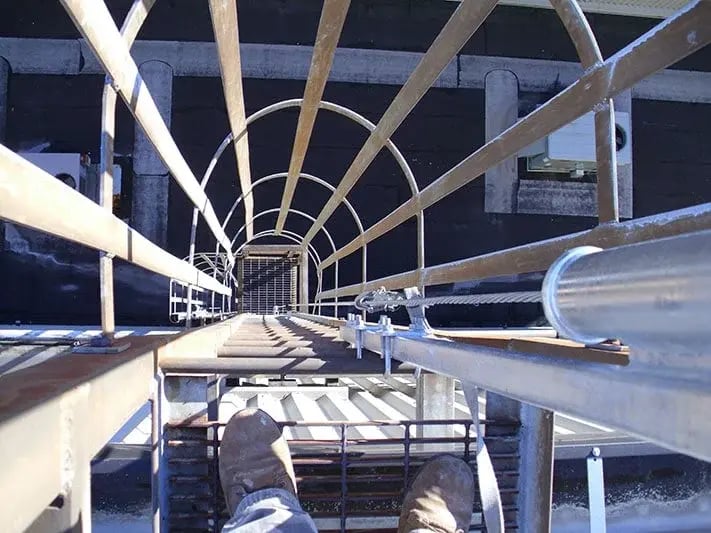Department of Defense
Although the cranes, aircraft hangars, ship and railroad yards associated with DoD and military installations exist to keep our nation safe, these same facilities present a number of fall hazards that potentially put military personnel and defense contractors in harms way. From maintenance of fixed wing aircraft, ships and submarines, and a substantial fleet of trucks, tanks, and other vehicles, to the unloading railroad cars and freighters, work performed in military installations must be done under the protective umbrella of a comprehensive approach to fall protection, which includes the proper equipment and personnel training. Selecting the proper fall protection partner under these circumstances is mission critical.
We are a complete turnkey provider of OSHA compliant fall protection systems and have years of design and installation experience in the defense market sector. Contact us for expert assistance with your fall arrest, fall restraint and fall protection requirements.

Fall Protection Solutions
Design Considerations
The fall protection requirements for aviation maintenance personnel are diverse. While aircraft maintenance technicians all face working at heights on smooth, slippery surfaces, hangar roof heights, differing potential anchor points, shape and roof pitch/curvature, and the amount of load that can be safely added to a roof’s internal structure vary from one hangar to the next.
In maintenance facilities designed primarily for smaller planes, positioning requirements and lower working heights typically require a rigid rail overhead trolley system. Cartesian, or two way coordinate systems offer the flexibility to provide fall protection for 100% of planned coverage, and can be power or manually driven. On taller aircraft where working heights allow, fixed horizontal lifelines are used in addition to rigid rail trolley fall protection systems. For outside tarmac maintenance, DFP also offers portable fall protection systems, including vacuum single point anchors.
Regardless of the structural limitations of your maintenance facility and the size of aircraft serviced, DFP engineers each hangar fall protection system with several guiding principles. Our goal is to engineer fall protection systems to provide complete access to each section of the plane or helicopter. Fall protection must not interfere with mobility or productivity. All systems are engineered with simplicity and ease of use as goals to ensure compliance. Finally, each fall protection system must meet all military and DoD fall protection standards (which in some cases are more stringent than OSHA) in a cost-effective manner. These design principles, coupled with years of experience in aviation settings make DFP the ideal partner for all of your hangar fall protection needs.
For crane and crane rail applications as well as paint blast booth facilities commonly found in military installations, all horizontal lifelines, rigid beam systems, and single point anchors must safely accommodate the number of intended users and arrest falls before personnel came come into contact with surfaces beneath the designated work area. All DFP installation engineers have the needed security clearances to perform work in restricted areas and appreciate the unique nature of the fall protection challenges posed by the defense market sector.

b-1.jpg?width=1368&height=1340&name=Rail%20(175)b-1.jpg)




-portrait.webp?height=2000&name=Truck%20(135)-portrait.webp)
%20b.webp?width=500&height=333&name=Truck%20(102)%20b.webp)




1.webp?width=500&height=380&name=HLL%20Overhead%20(661)1.webp)

.webp?width=453&height=549&name=Confined%20Space%20and%20Rescue%20-%20In%20Applications%20(13).webp)
.webp?width=650&height=488&name=midcoast%20job%20(2).webp)


